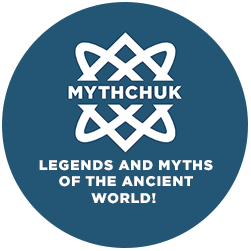Yggdrasil — The World Tree of Norse Mythology and the Nine Realms
- Main
- >
- Norse Mythology
- >
- Myths and Legends
- >
- Yggdrasil
The World Ash Yggdrasil connects the Nine Realms… But what gnaws at it every day? You’ll find out at the end.
What is Yggdrasil?
Yggdrasil is the World Tree in Norse mythology—a colossal ash that links all nine realms. Its name, according to the Prose Edda by Snorri Sturluson, may mean “Odin’s steed,” with “Yggr” being one of Odin’s names. Yggdrasil is not a living being in the human sense, but in the mythological cosmos, it is the central axis—the symbol of life, order, and fate.
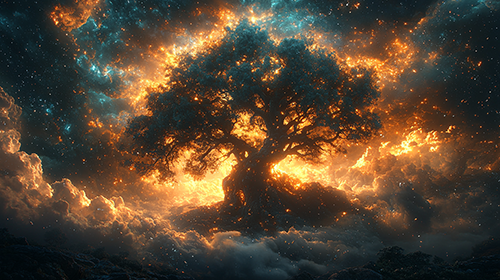 Yggdrasil
YggdrasilThe Birth of the World Tree
No source describes the literal “birth” of Yggdrasil, but the Völuspá suggests it existed from the dawn of creation. After the cosmos was shaped from Ymir’s body, the tree grew to bind Niflheim, Midgard, Asgard, and the other worlds.
Its three roots stretch in different directions:
- to Niflheim, where the spring Hvergelmir feeds the cosmic river;
- to Jotunheim, near Mímisbrunnr (Mímir’s Well)—the source of wisdom;
- to the heavens, in the gods’ realm, where the well Urðarbrunnr (Urðr’s Well) lies—the spring of fate.
These three roots symbolize three primal forces: death, knowledge, and destiny. Thus begins Yggdrasil’s life—rooted in the essence of existence.
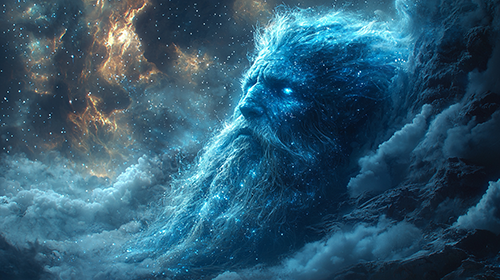 The Birth of the World Tree
The Birth of the World TreeThe Tree’s Inhabitants
Yggdrasil is more than a tree—it resembles a city or cosmic spine inhabited by beings. The Grímnismál mentions:
- An eagle sits at its crown, seeing everything;
- Between its eyes perches the hawk Veðrfölnir;
- The squirrel Ratatoskr scurries up and down the trunk, carrying insults between the eagle and the dragon;
- Beneath the roots lives the dragon Níðhöggr, who gnaws at them;
- Four stags—Dáinn, Dvalinn, Duneyrr, and Duraþrór—graze on its leaves.
These creatures represent cosmic balance, reflecting the tension between above and below, light and shadow.
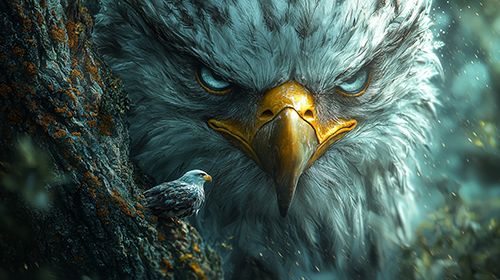 The Tree’s Inhabitants
The Tree’s InhabitantsThe Wells and Power of Yggdrasil
The three wells at Yggdrasil’s roots are distinct centers of cosmic force:
- Urðarbrunnr, named after the Norn Urðr (Fate), is where the Norns—Urðr, Verðandi, and Skuld—daily water the tree with sacred water and white clay to keep it from withering. Their names mean past, present, and future.
- Mímisbrunnr is the well of wisdom, where Odin sacrificed his eye for knowledge. Mímir, the well’s guardian, remains among the wisest even in death, as his severed head continues to speak.
- Hvergelmir in Niflheim is the source of all rivers, from which primal energy flows. Its venomous streams symbolize chaos and destruction—opposite to Urðarbrunnr’s sustaining waters.
These wells are energy points that nourish Yggdrasil and maintain the cosmos.
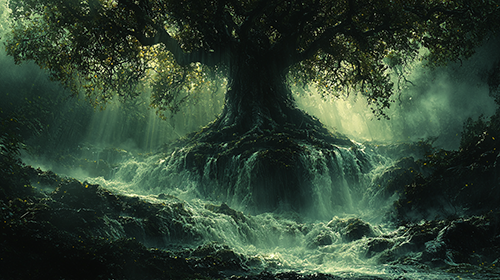 The Wells and Power of Yggdrasil
The Wells and Power of YggdrasilThe Realms of Gods and Humans
Yggdrasil connects the Nine Realms, including:
- Asgard – home of the Æsir gods;
- Vanaheim – realm of the Vanir gods;
- Álfheim – land of the light elves;
- Midgard – the human world;
- Jotunheim – land of the giants;
- Svartálfheim – realm of the dark elves or dwarves;
- Niflheim – realm of cold and death;
- Muspelheim – world of fire;
- Helheim – realm of the dead, ruled by Hel, daughter of Loki.
All exist upon or between Yggdrasil’s branches and roots. The gods gather there daily to hold council, render judgment, and foresee the future.
The Tree is both “stage” and “tool”—existing outside of space, yet binding every part of creation together.
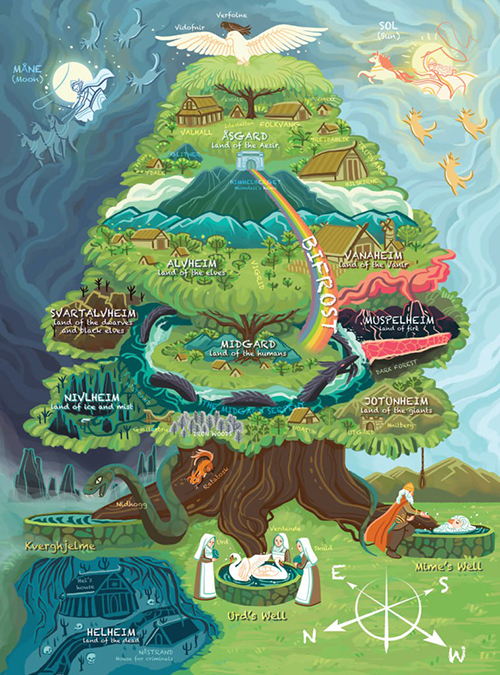 The Realms of Gods and Humans
The Realms of Gods and HumansOdin and the Tree
One of the most profound myths is Odin’s self-sacrifice upon Yggdrasil. As told in the Hávamál, Odin hung for nine days and nights, pierced by his spear, without food or drink, to gain the knowledge of the runes.
Yggdrasil here is not only the cosmic structure, but a site of mystical revelation and transformation—a tool of initiation. In this act, Odin does not merely gain wisdom—he is reborn, able to influence fate itself.
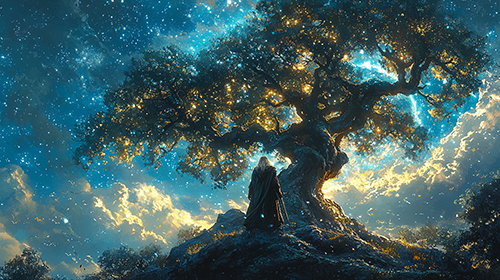 Odin and the Tree
Odin and the TreeRagnarök and the Fate of Yggdrasil
What happens to Yggdrasil at Ragnarök? The Völuspá states that the tree will shudder at the end of the world. It will survive the great battle, but it will be scarred—for even the cosmic foundations are not eternal.
Níðhöggr, the dragon, gnaws at its roots daily, enacting constant decay. Yet Yggdrasil stands firm, sustained by the Norns.
After Ragnarök, the world will be reborn—new and younger—and Yggdrasil will grow again, preserving the continuity of life.
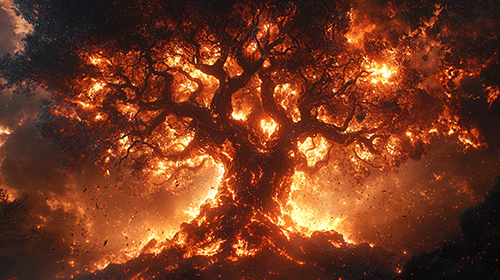 Ragnarök and the Fate of Yggdrasil
Ragnarök and the Fate of YggdrasilConclusion: The Symbol of Eternal Cycle
Yggdrasil is not just a tree. It is the bridge between worlds, the image of creation, a symbol of unity, cyclicality, knowledge, and fate. It does not “live” in the human sense, but embodies the life of all that exists.
Its role in Norse mythology is deeply sacred—even Odin is not above it. All beings come to it—for judgment, for sacrifice, for prophecy.
In today’s culture, Yggdrasil appears in symbols, art, literature, and games—but in ancient sources, it is first and foremost the world’s heart, linking the heavens, the underworld, and the human realm.
